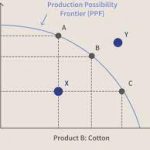America’s first Nobel Prize winner for economics, the late Paul Samuelson, is often credited with providing the first clear and simple explanation of the economic problem – namely, that in order to solve the problem of scarcity all societies, no matter how big or small, developed or not, must endeavour to answer three basic questions.
What to produce?
Societies have to decide the best combination of goods and services to meet their needs. For example, how many resources should be allocated to consumer goods, and many resources to capital goods, or how many resources should go to schools, and how many to defence, and so on.
How to produce?
Societies also have to decide the best combination of factors to create the desired output of goods and services. For example, precisely how much land, labour, and capital should be used produce consumer goods such as computers and motor cars.
For whom to produce?
Finally, all societies need to decide who will get the output from the country’s economic activity, and how much they will get. For example, who will get the computers and cars that have been produced? This is often called the problem of distribution.




Comments are closed